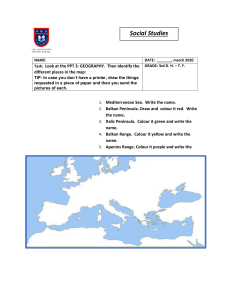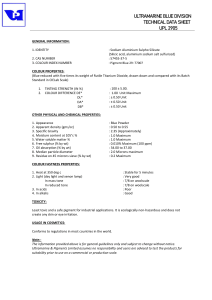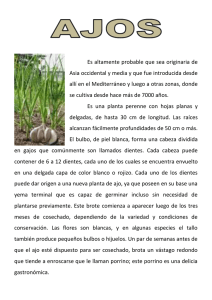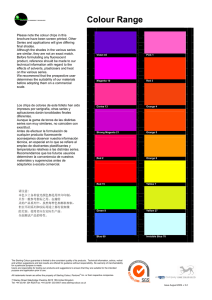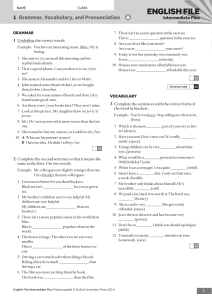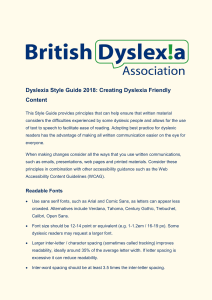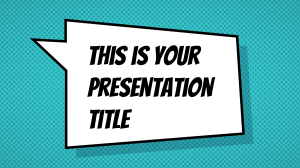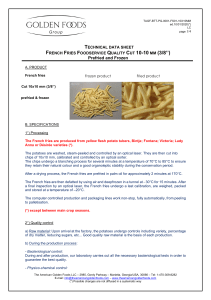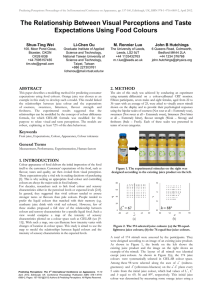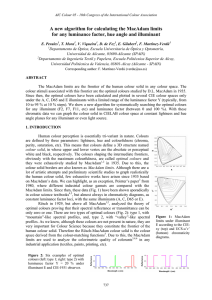Are you a good observer?
Anuncio
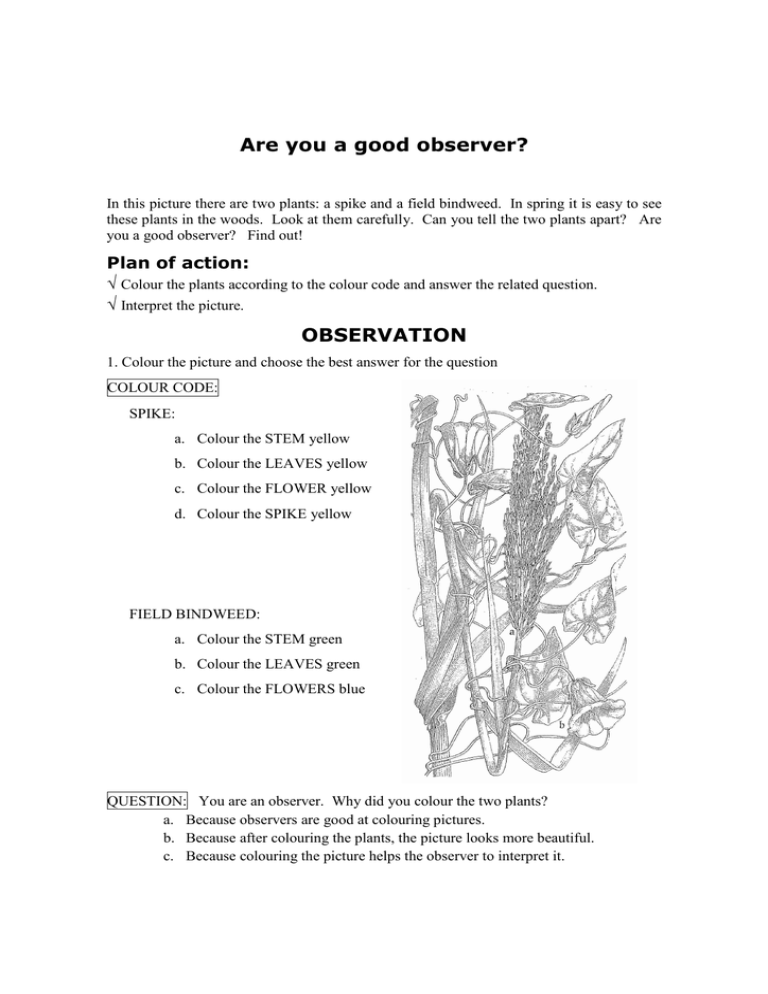
Are you a good observer? In this picture there are two plants: a spike and a field bindweed. In spring it is easy to see these plants in the woods. Look at them carefully. Can you tell the two plants apart? Are you a good observer? Find out! Plan of action: √ Colour the plants according to the colour code and answer the related question. √ Interpret the picture. OBSERVATION 1. Colour the picture and choose the best answer for the question COLOUR CODE: SPIKE: a. Colour the STEM yellow b. Colour the LEAVES yellow c. Colour the FLOWER yellow d. Colour the SPIKE yellow FIELD BINDWEED: a. Colour the STEM green b. Colour the LEAVES green c. Colour the FLOWERS blue QUESTION: You are an observer. Why did you colour the two plants? a. Because observers are good at colouring pictures. b. Because after colouring the plants, the picture looks more beautiful. c. Because colouring the picture helps the observer to interpret it. INTERPRETATION What does field bindweed the to expose its leaves to the sun? How does it do it? 1. In pairs, use what you learned about stimuli and responses and try to answer these questions. Prepare to explain the class. 2. Marc, Farah and Rosa are students in 2n ESO1. This is what they answered to those questions. Which explanation is best? Use checklist 1 to decide. Marc: La correhuela es una planta que tiene los tallos muy flexibles, y para poder captar la luz se enreda a otras plantas, porque sino estaría siempre a ras del suelo y no captaría bien la luz del sol. La correhuela cuando nota a otras plantas inmediatamente se enreda y trepa eso lo hace gracias al tacto, uno de los estímulos que puede percibir. Farah: La correhuela trepa por la espiga dando vueltas, el estímulo es el contacto, gracias al contacto de la espiga la correhuela trepa dando vueltas, por que si no se caería y la luz le daría muy poco y en el suelo se moriría. Rosa: La correhuela ha captado un estímulo y ha hecho una respuesta. El estímulo es que ha hecho contacto y la respuesta es que se ha enrollado a la espiga ya que si no se enrollara el tallo caería al suelo y las hojas, y la planta moriría porque no captaría la luz necesaria para la planta Can you write a better explanation? Try! 3. Check your explanations in pairs. Use checklists 1 & 2. GLOSSARY2: 1 Son respuestas reales, dadas en una clase en español. Para la actividad en una clase en inglés deberíamos disponer de respuestas en esta lengua. 2 Poner los términos que creamos necesitan los estudiantes Assessment Checklists My text: Reviewer: ……… Checklist 1: CONTENT & LANGUAGE Exemplary Adequate Poor Sometim es Never A. Says what the plant does? (it describes the relevant aspects in the picture). B. Explains how the plant does so. (it relates stimuli and response). C. Says why the plant does so (it justifies how useful the mechanism is). E. Uses appropriate scientific terms. F. Answers the initial questions (it doesn’t include other information referring to the plant). D. Is an explanatory text (there are suitable connectors: because, due to, consequently, etc.; and verbs in the present tense: grows, wraps around, etc. Checklist 2: WRITING CONVENTIONS G. Sentences are short or medium length (less than 15 words). H Every sentence begins with a capital letter and ends in a full stop (.). I. Every sentence begins with a SUBJECT and has a VERB. J. The spelling is correct. (¿Qué le recomendarías para que mejorara su explicación?): Pilar Garcia, Neus Sanmartí, Cristina Escobar, UAB. 2002-10 Always
